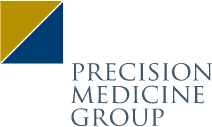In today’s health care arena, digital and social media are essential tools—for helping health care providers (HCPs) stay connected to each other and their patients, for advancing conversations about new treatments, for sharing information, and more.
Digital opinion leaders (DOLs) are influential members of an online community to whom others turn for advice, opinions and information. The right brand strategy can depend on knowing who the DOLs are in your therapeutic community—and what they’re saying.
DOL Map is our proprietary system for identifying DOLs and tapping into their latest opinions and trending topics.
We recently put the power of DOL Map to work in the hemophilia space to:
A. Identify 25 of the top HCP social media opinion leaders
B. Understand how and what they are communicating among themselves and their broader audiences
From our Hemophilia DOL Map Dashboard, we gleaned 5 key points:
1. A tight group
This network of hemophilia experts is among the strongest we have seen—likely a result of the disease itself, given its rarity. In this group of 25 top HCP social media opinion leaders from around the world, most everyone corresponds and makes mention of one other. The expert in the group with the most interactions has been Michael Makris, MB BS, MD, professor emeritus of haemostasis and thrombosis at The University of Sheffield Medical School in the United Kingdom. In recent months, Dr Makris has been tagged in 72 conversations among the group
2. Leader in Twitter
Angela C. Weyand, MD, a clinical assistant professor specializing in pediatric hematology/oncology at University of Michigan Health in Ann Arbor, has the strongest Twitter base—with over 55,000 followers and an extended reach of over 1 million after factoring in reposting of tweets. A topic of hers that has been of great interest to the community? Health inequity
3. Hemophilia in women
Hemophilia in women has not been a focus of research. This looks to be changing. The International Society on Thrombosis and Haemostasis (ISTH) recently issued guidelines for new nomenclature to define hemophilia in women and girls, and associated studies are being widely spread and championed among DOLs.
4. Study in the spotlight
The 2021 article “B Cell-Activating Factor Modulates the Factor VIII Immune Response in Hemophilia A” by Doshi et al in The Journal of Clinical Investigation has attracted attention. In it, the authors report a crucial discovery that could mitigate and eliminate immune responses that cause treatment failure in almost one-third of people with acute hemophilia A. The report continues to be picked up in the life science press and social media posts.
5. ISTH 2021 Virtual Conference
With 149 discussions around the #ISTH2021 hashtag, it was one of the most used keywords among this group after the meeting. The conference ran from July 17 to 21, and HCPs in the group shared interesting presentations, follow-up thoughts, and congratulatory messages before, during, and after the meeting.
Click here to request a demo of PRECISIONscientia’s proprietary tool, DOL Map







